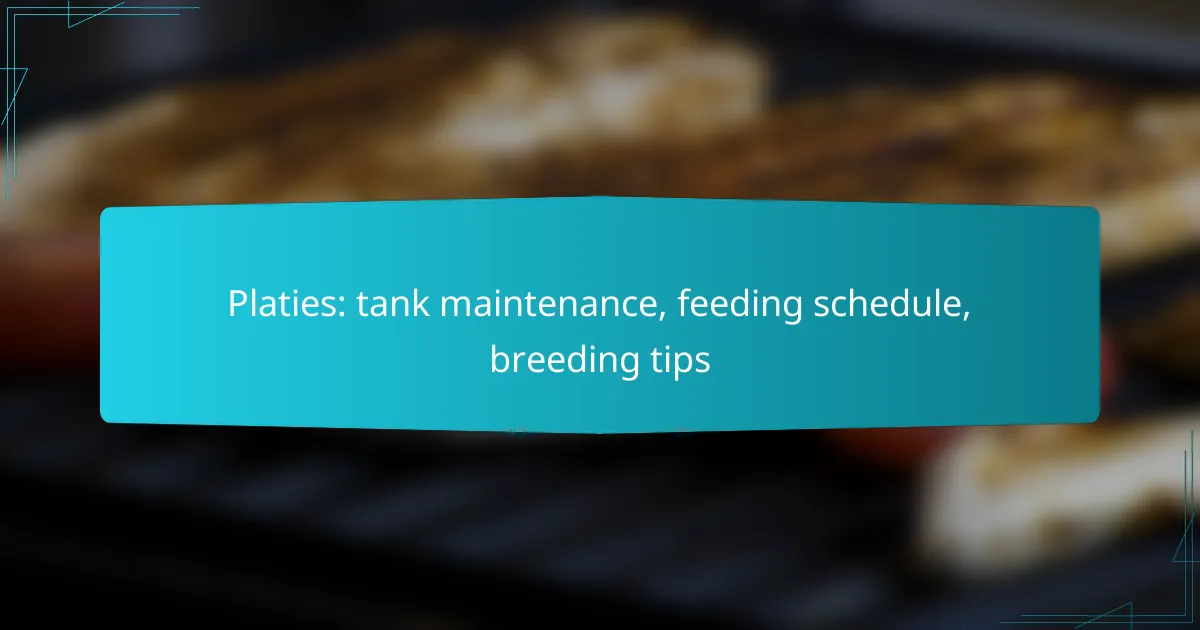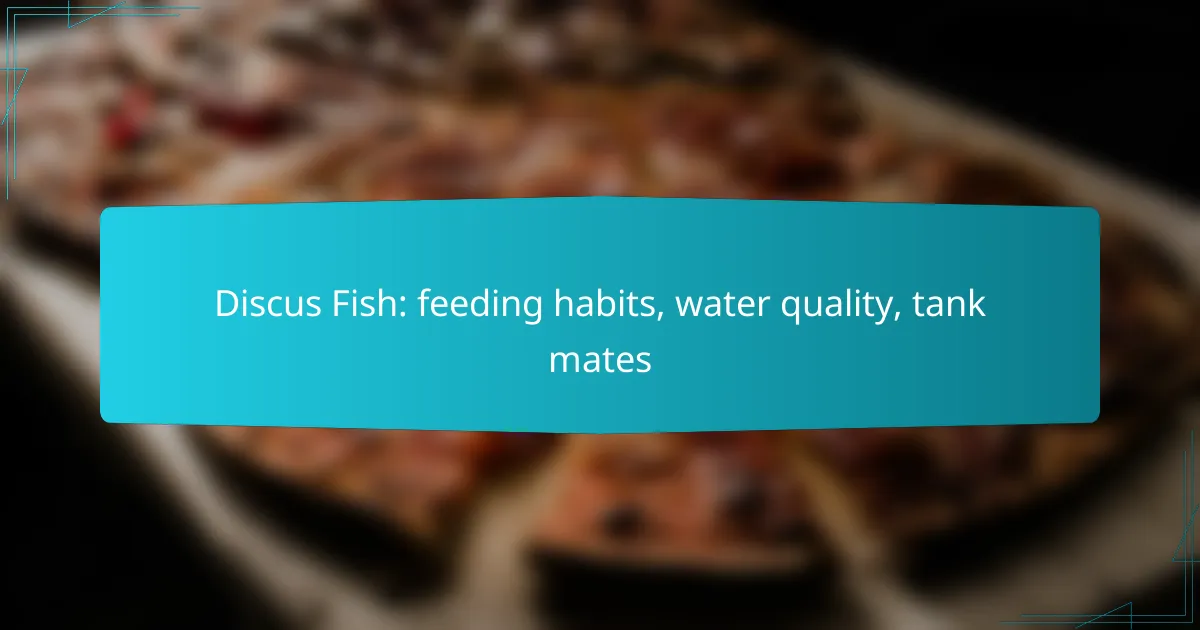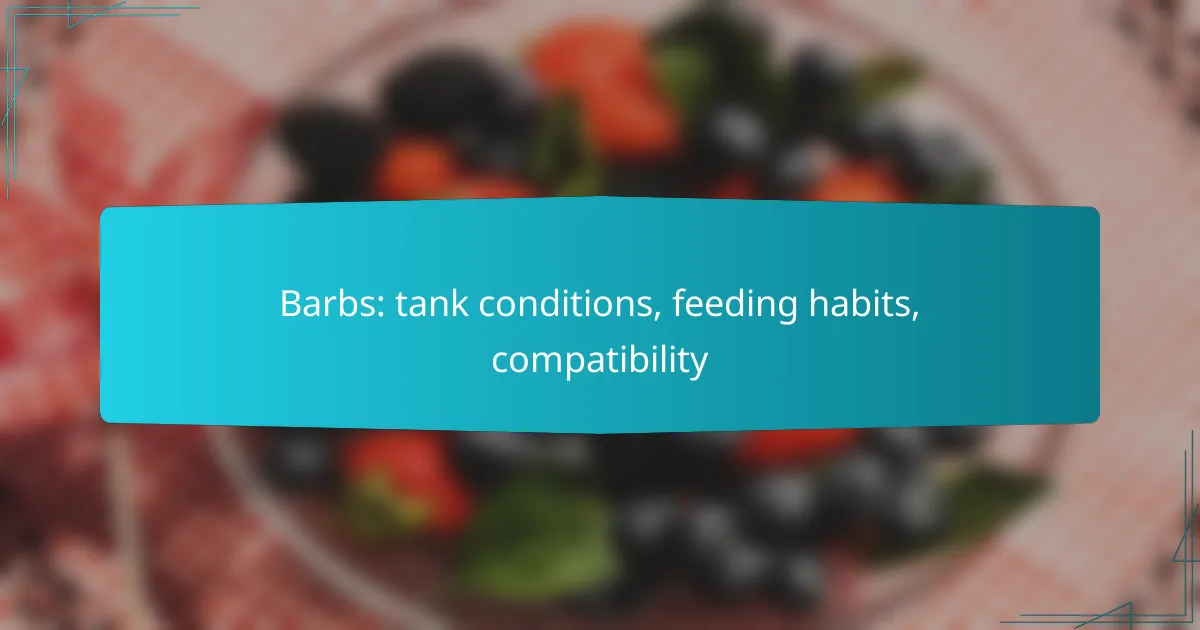Platies are vibrant and hardy fish that require specific care to thrive in an aquarium setting. Regular tank maintenance, including water changes and monitoring parameters, is essential for their health. Additionally, a consistent feeding schedule of small meals two to three times a day ensures they receive the necessary nutrition. For those interested in breeding platies, creating a safe and clean environment is key to supporting both the parents and their fry.
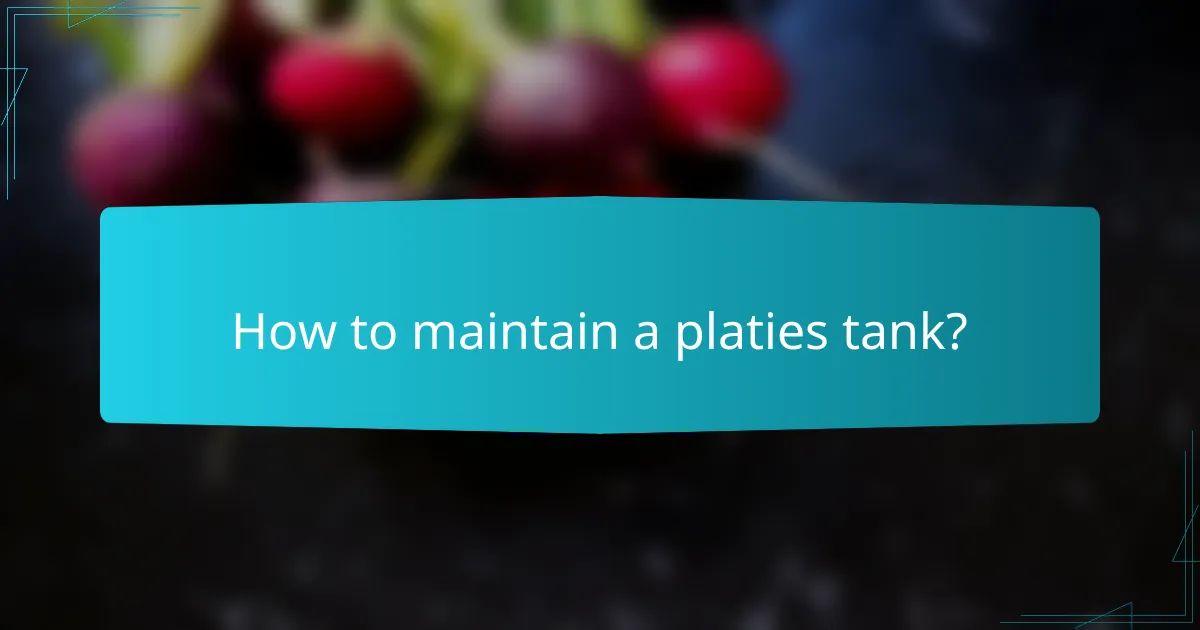
How to maintain a platies tank?
Maintaining a platies tank involves regular water changes, monitoring water parameters, and ensuring proper filtration and cleaning. These practices help create a healthy environment for your fish, promoting their well-being and longevity.
Regular water changes
Performing regular water changes is crucial for maintaining water quality in a platies tank. Aim for a 20-30% water change every week to remove toxins and replenish essential minerals. This routine helps keep ammonia and nitrate levels low, which is vital for fish health.
Use a water conditioner to treat tap water before adding it to the tank. This step neutralizes harmful chemicals like chlorine and chloramine, ensuring a safe environment for your platies.
Optimal water parameters
Platies thrive in water with specific parameters. The ideal temperature range is between 24-27°C (75-81°F), with a pH level of 6.8-8.5. Regularly test the water using a reliable kit to ensure these conditions are met.
Keep an eye on hardness levels, ideally between 10-20 dGH, to provide a suitable environment for platies. Adjustments can be made using mineral supplements or reverse osmosis water if necessary.
Filtration system maintenance
A good filtration system is essential for a platies tank, as it helps remove waste and maintain water clarity. Clean the filter media every month to prevent clogging, but avoid over-cleaning, as beneficial bacteria can be lost.
Replace filter cartridges according to the manufacturer’s recommendations, typically every 4-6 weeks. This ensures optimal filtration efficiency and a healthy habitat for your fish.
Tank cleaning schedule
Establish a regular tank cleaning schedule to maintain a healthy environment. Clean the tank walls and decorations every couple of weeks to prevent algae buildup. Use a soft sponge or algae scraper to avoid scratching the glass.
Vacuum the substrate during water changes to remove uneaten food and waste. This practice helps maintain water quality and prevents harmful bacteria from developing.
Decor and substrate upkeep
Maintaining decor and substrate is important for the overall health of your platies. Regularly check for sharp edges or broken pieces that could injure your fish. Replace or repair any damaged items promptly.
Choose a substrate that is easy to clean, such as fine gravel or sand, and ensure it is free from debris. Rinse new decorations and substrate thoroughly before adding them to the tank to remove any harmful residues.

What is the ideal feeding schedule for platies?
The ideal feeding schedule for platies involves providing small meals two to three times a day. This frequency helps maintain their health and ensures they receive adequate nutrition without overfeeding.
Frequency of feeding
Platies thrive on a feeding schedule of two to three times daily. This regularity mimics their natural feeding habits and promotes optimal digestion. Avoid feeding them once a day, as this can lead to overeating or nutritional deficiencies.
Types of food for platies
Platies are omnivorous and benefit from a varied diet. High-quality flake food, pellets, and frozen or live foods like brine shrimp and daphnia are excellent choices. Supplementing their diet with vegetable matter, such as blanched spinach or algae wafers, can enhance their overall health.
Portion sizes
When feeding platies, offer only what they can consume within a few minutes. A general guideline is to provide a pinch of food per fish, adjusting based on their size and activity level. Monitor their feeding behavior to avoid overfeeding, which can lead to water quality issues and health problems.
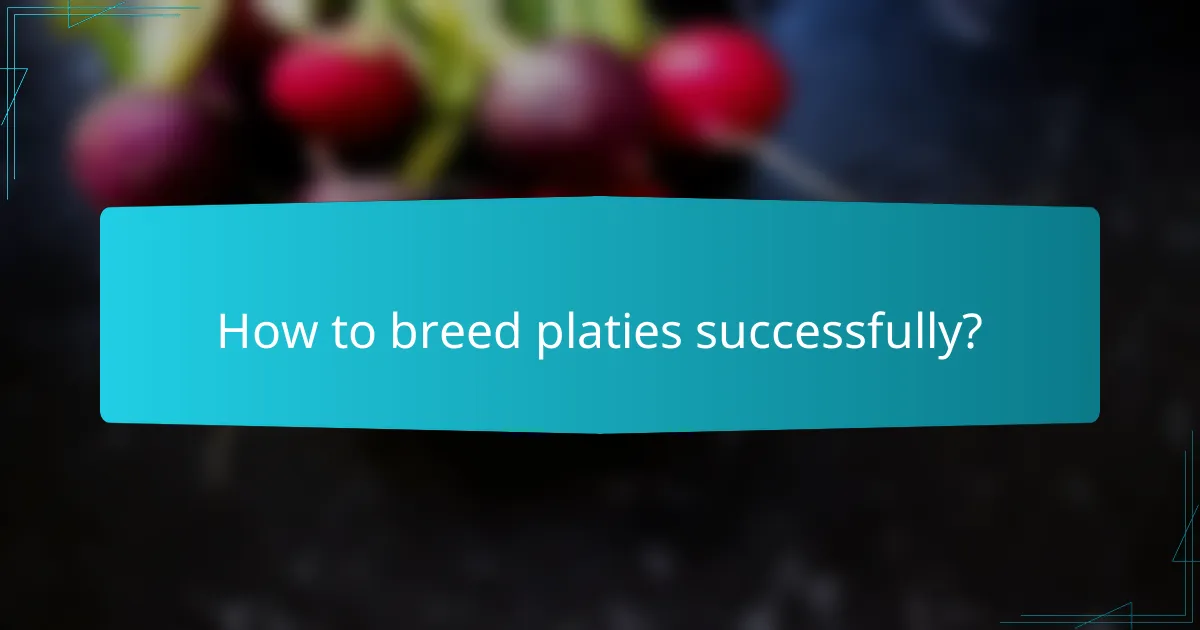
How to breed platies successfully?
To breed platies successfully, provide a suitable environment and proper care during the breeding process. Focus on maintaining water quality, ensuring a balanced diet, and creating a safe space for fry to thrive.
Breeding tank setup
Set up a dedicated breeding tank that is at least 10 gallons to accommodate the adult platies and their fry. Use a sponge filter to maintain water quality without risking harm to the young fish. Include plenty of plants or hiding spots, such as Java moss or floating plants, to provide shelter for the fry.
Maintain a stable temperature between 24-28°C (75-82°F) and ensure the water is slightly acidic to neutral, with a pH of around 6.8-7.5. Regular water changes of about 20% weekly will help keep the environment clean and healthy.
Gestation period
The gestation period for platies typically lasts around 4-6 weeks, depending on water temperature and the health of the female. Monitor the female closely for signs of pregnancy, such as a swollen belly and a darkening gravid spot near the anal fin.
Once the female is ready to give birth, separate her into the breeding tank to reduce stress and protect the fry from being eaten by other fish. After giving birth, return her to the main tank to recover.
Care for fry
After the fry are born, provide them with finely crushed flakes or specialized fry food to ensure proper growth. Feed them small amounts several times a day to promote healthy development. Keep the water clean and perform regular water changes to maintain optimal conditions.
As the fry grow, gradually introduce them to larger food particles and ensure they have enough space to swim freely. Monitor their growth and health, and be prepared to separate any aggressive individuals to prevent bullying.

What are the common health issues in platies?
Platies can experience various health issues, often related to water quality, diet, and stress. Recognizing these problems early is crucial for maintaining a healthy aquarium environment and ensuring the well-being of your fish.
Signs of illness
Common signs that your platies may be ill include changes in behavior, such as lethargy or hiding, as well as physical symptoms like discoloration, fin rot, or abnormal swimming patterns. Look for signs of bloating or lesions on the skin, which can indicate more serious health concerns.
Monitoring your platies regularly can help you spot these symptoms early. If you notice any of these signs, it’s essential to take action quickly to prevent further health deterioration.
Preventative measures
To prevent health issues in platies, maintain optimal water conditions by regularly testing pH, ammonia, nitrite, and nitrate levels. Aim for a pH between 6.8 and 8.5 and keep ammonia and nitrite levels at zero.
Additionally, provide a balanced diet that includes high-quality flakes, pellets, and occasional live or frozen foods. Regular water changes and tank cleanings will also help reduce stress and prevent disease outbreaks.
Treatment options
If your platies show signs of illness, consider isolating affected fish in a quarantine tank to prevent spreading diseases. Treatment options vary depending on the specific illness but may include medicated foods, aquarium salt, or over-the-counter medications.
Always follow the manufacturer’s instructions for any treatments and monitor your fish closely during recovery. If symptoms persist, consult with an aquarium specialist or veterinarian for further advice.
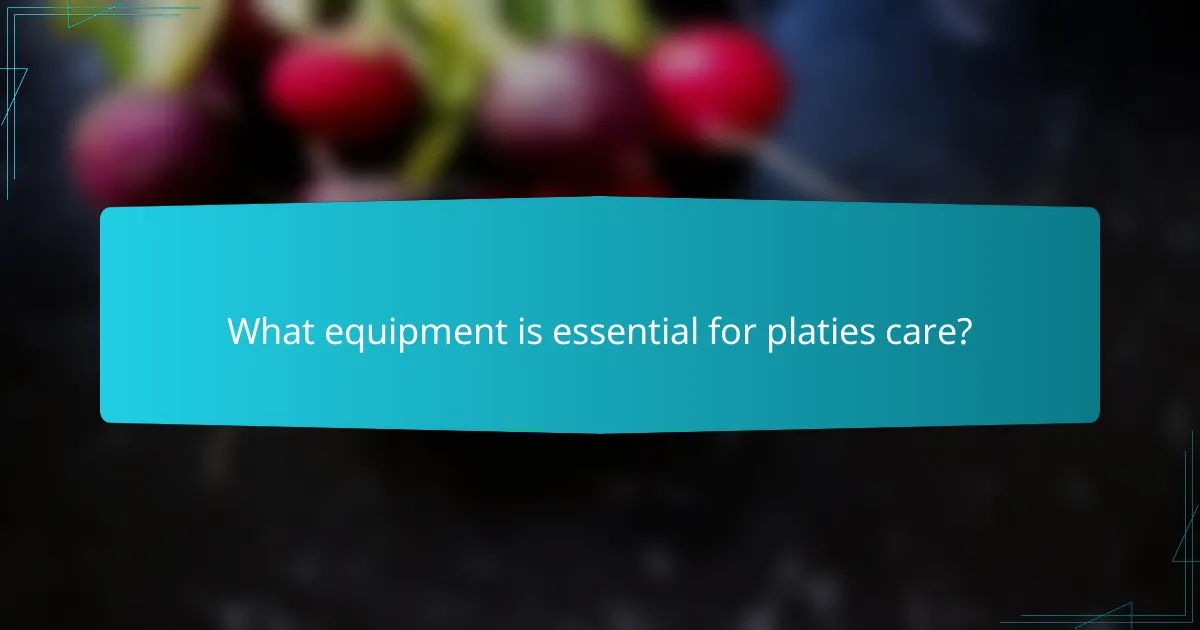
What equipment is essential for platies care?
Essential equipment for platies care includes a suitable aquarium, heating and lighting systems, and water testing kits. These tools help maintain a healthy environment for platies, ensuring they thrive in captivity.
Aquarium size recommendations
For platies, a minimum aquarium size of 20 gallons is recommended to provide ample swimming space and maintain stable water conditions. Larger tanks can accommodate more fish and help dilute waste products, which is beneficial for their health.
When planning your aquarium, consider the number of platies you wish to keep. A good rule of thumb is to allow about 5 gallons per platy to avoid overcrowding and stress.
Heating and lighting requirements
Platies thrive in water temperatures between 72°F and 78°F (22°C to 26°C). A reliable aquarium heater is essential to maintain this temperature range, especially in cooler climates. Choose a heater with a suitable wattage based on your tank size.
Lighting should mimic natural conditions, with about 10 to 12 hours of light per day. Use LED or fluorescent lights to provide adequate illumination while minimizing heat output, which can affect water temperature.
Water testing kits
Water quality is crucial for platies, making water testing kits an essential piece of equipment. These kits typically measure pH, ammonia, nitrite, and nitrate levels, helping you monitor the health of your aquarium.
Regular testing, at least once a week, will help you catch any issues early. Aim for a pH level between 6.8 and 7.8 and keep ammonia and nitrite levels at zero for optimal fish health.






